What do local historians and corporations around the country have in common? One answer: a passion for historical corporate legacy.
St. Louis-based Guarantee Electrical Company has been lighting up communities since its inception in 1902 to power the 1904 World’s Fair. Over a century later, Guarantee continues to impact not only the St. Louis skyline but businesses across the globe. With a past that expansive, Guarantee knew they had to act fast to preserve their archives while also piecing together their history through records they found.
I spoke with Guarantee’s VP of Market Strategies Nick Arb and Marketing Coordinator Kieren Williams about tackling a corporate archive and what it means to fill in the gaps about your own history.
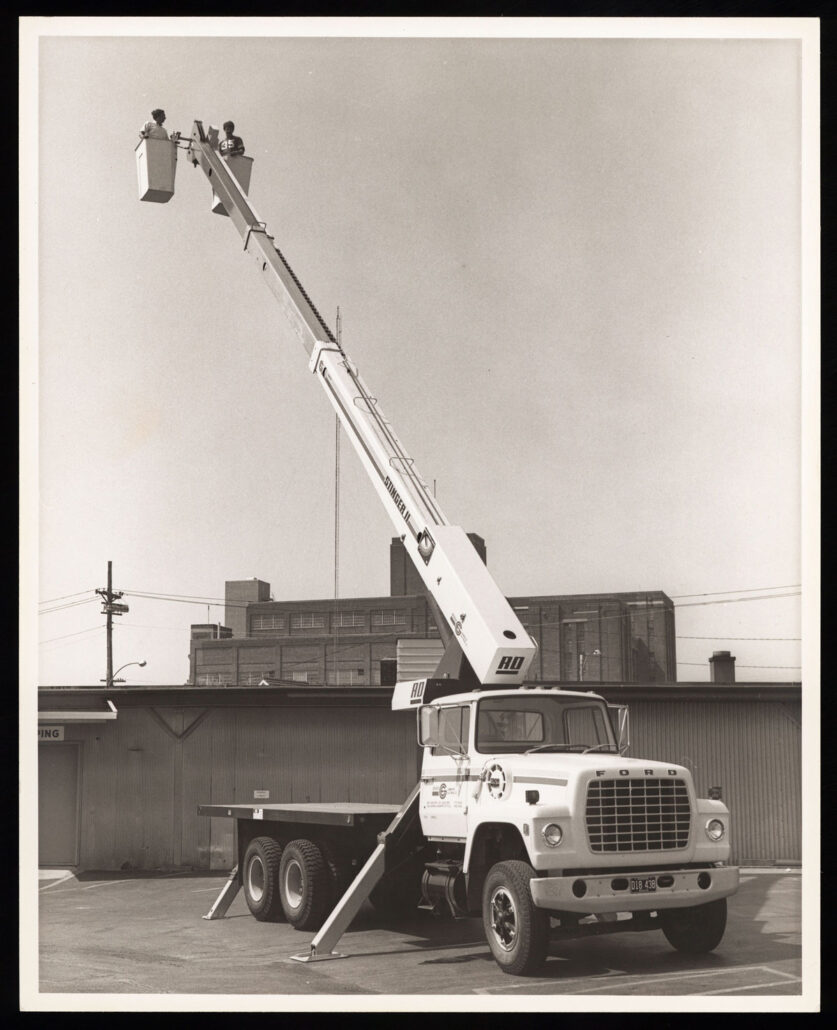
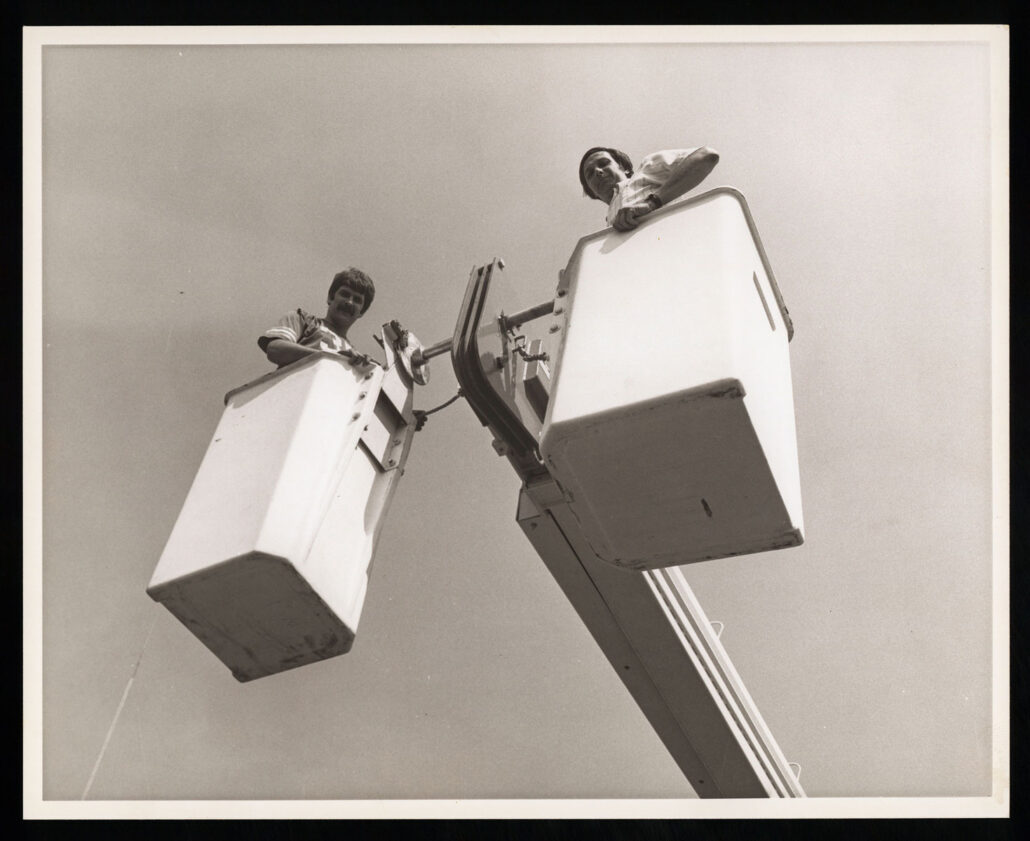
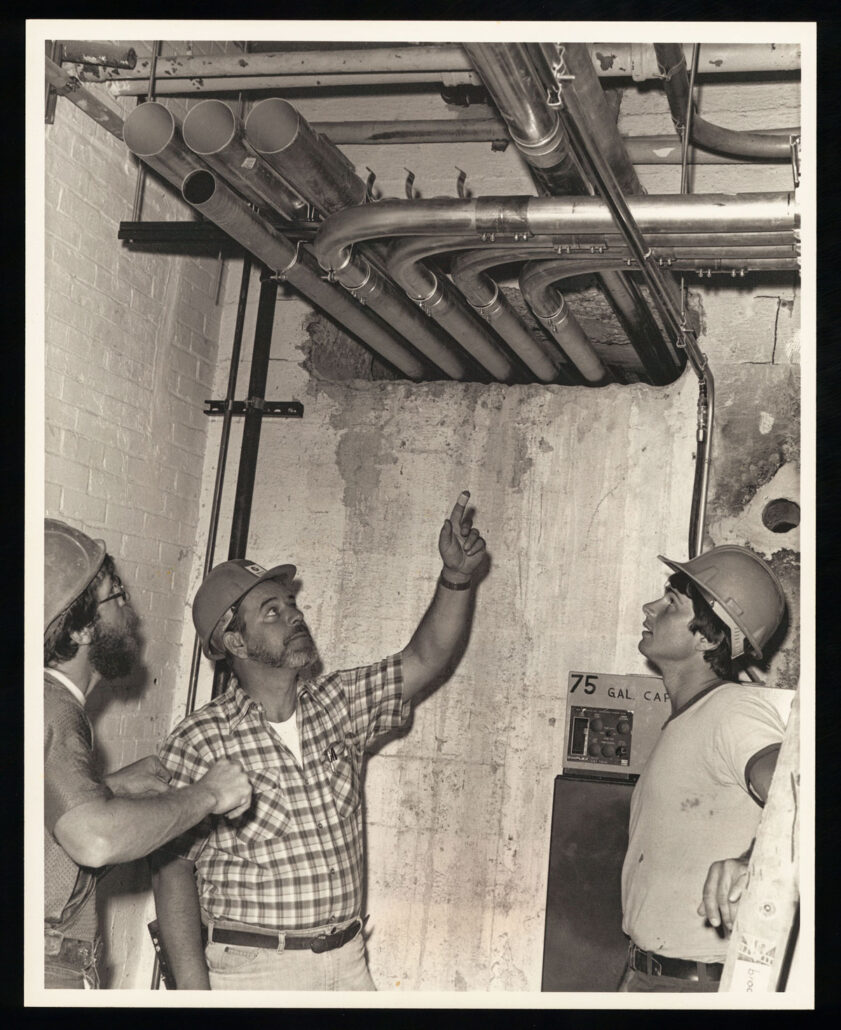
Images provided by Guarantee Electrical Company and used with permission.
AA: Let’s start by talking about the collection itself, which has been so fun to work on over the past year. It was fascinating to look back at the chapters of Guarantee’s history. Do you have a personal history with the collection?
Nick: Both of us are relatively new to Guarantee. I’ve been here almost five years, and Kieren has been here about six months or so. But Guarantee has a storied history going back 120 years. There was an oral history of Guarantee, you know, stories that have been passed down, and we’ve got some pictures hanging on the wall [at Guarantee’s main office] and some PDF timelines of the company’s history. But there wasn’t really a good central location for everything. That’s really spurred my interest in trying to digitize the collection.
We weren’t familiar with a lot of the contents; there were a lot of surprises. There were a lot of boxes that had been passed down from executive admin to the marketing team, and then they were just sitting in the basement in a pile. We knew that if we didn’t act sooner rather than later, a lot of that could be lost. As we’re going through the collection now on Filecamp, it’s helping to fill some gaps in that timeline.
Looking at those boxes in the basement, how did you choose the firm who would digitize your company’s history?
Nick: Like any good millennial, I turned to the internet, did a little searching, and came across Anderson Archival. I didn’t know that companies like yours existed, that people were specialized in this specific process and offered this service. That alone was great, but the fact that you were local was even better. The fact that you’ve worked with some firms I’m familiar with was the icing on top.
Once I reached out, [Project Manager] Marcia Spicer and I had a phone consultation about what we were looking for, and it just seemed like a perfect fit. Everybody here knew that it was something that we wanted to do, so there wasn’t really a lot of pushback as far as dollars and cents. Everybody understood the importance of doing it right rather than cheaply. Some of these documents you may only get one opportunity [to digitize without damage]. The fact that you offer museum-grade, quality services was a big selling point. If you want professional results, it’s best to work with a professional partner on projects such as this.
Everybody understood the importance of doing it right rather than cheaply. Some of these documents you may only get one opportunity [to digitize without damage].”—Nick Arb, Guarantee Electrical Company

Aside from having this collection that you’re not sure what exactly it contains, when you started this digitization project with us, what were some concerns that you knew that we’d eventually have to grapple with?
Nick: I knew that there was a lot in the collection that we didn’t necessarily need to preserve. I tried to pre-filter some of it, but I also felt confident that your team would use your best judgment and weren’t scanning some of the unnecessary items like printed out email correspondence, for example—that you’d be capturing the “meat” of the content. I’m glad that we were able to navigate that and to get the items that we wanted without a lot of extras.
My other concern was figuring out what’s in all these photos and having a platform that would allow us to be able to categorize and sort it all. It’s great to have it digitized, but constantly trying to flip or dig through it wasn’t a user-friendly experience. We came across the Filecamp platform, and so far we’re really pleased with it. It’s very intuitive. I’ve done some preliminary searches and it’s functioning how we envisioned.
I’m really glad to hear Filecamp is working for you and already meeting that need. How have you been using it on the ground?
Kieren: I have more of a creative role and get to do a lot of internal and external communication, social media posts, and all those things. When I first started [at Guarantee] back in June, we had just begun this digitization process, so I got to jump on board and see the whole process unfold. Right from the beginning, I had photos that I could use, and I’ve already used some in our internal communications and ads.
Growing up around and in St. Louis and seeing how some of those projects have transformed St. Louis, it’s been really cool to be able to use those photos. We’ve already had a lot of people say, “Wow, that’s really cool! Where did you get that picture?” It’s been a neat peek into history and being able to share that with the company, and externally as well, is incredible.
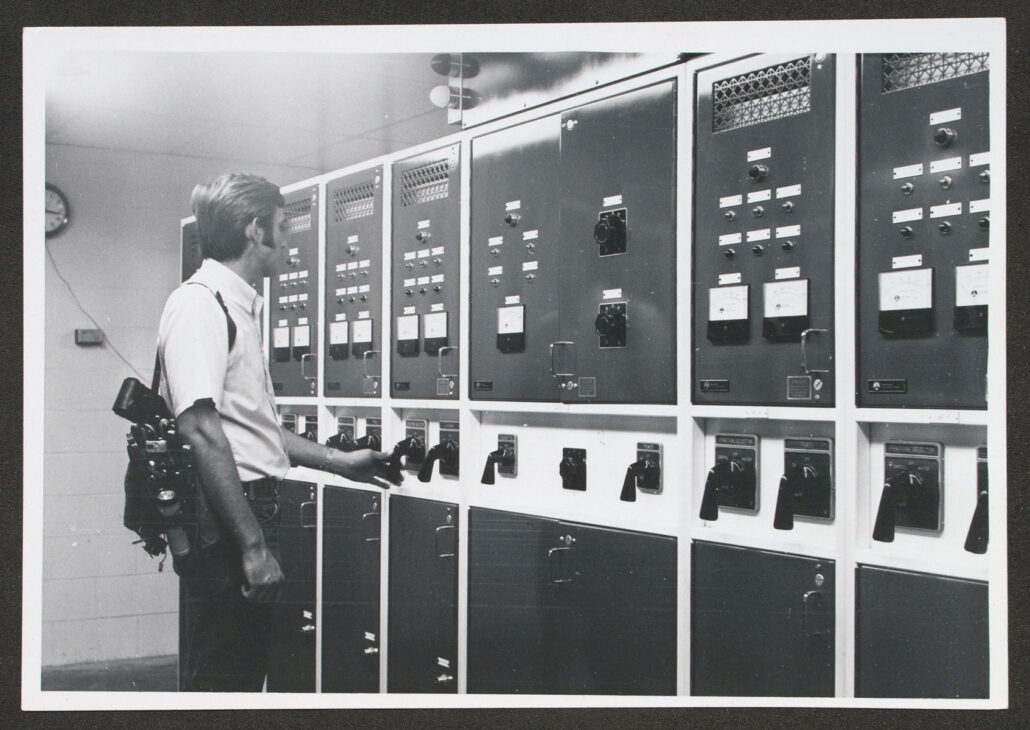
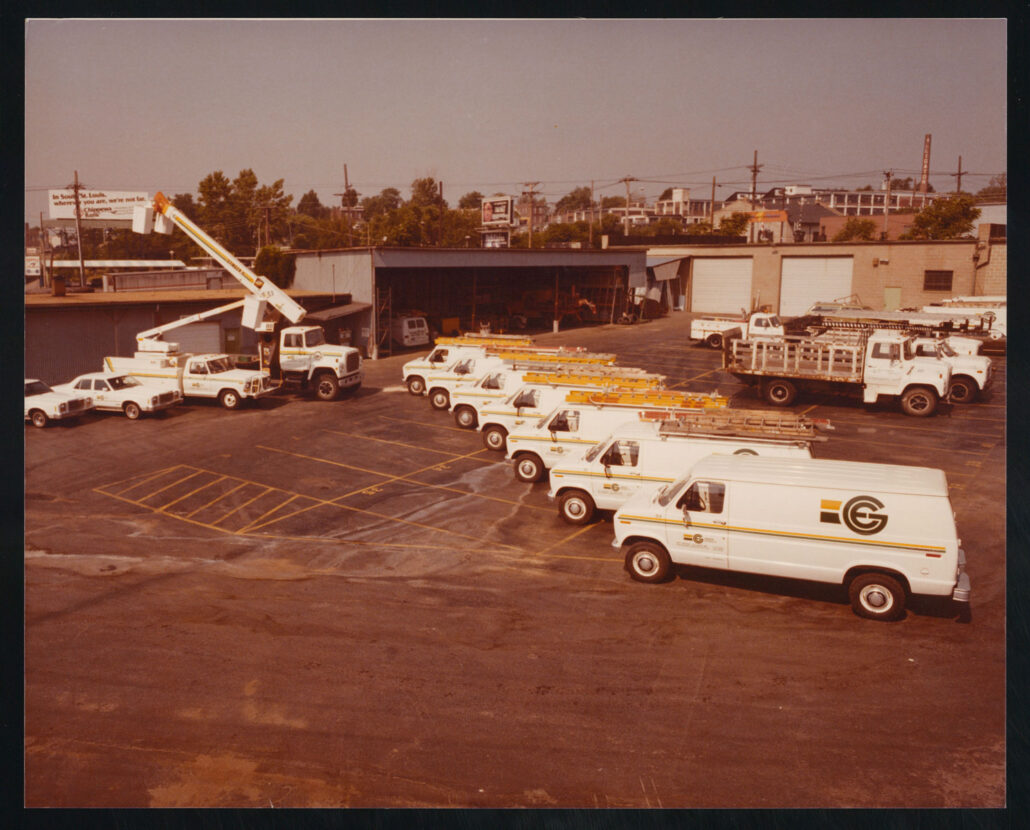
Nick: One use that wasn’t in mind when we started this project is that we are renovating our corporate building. The building’s pretty much gutted right now and getting a refresh. Part of that refresh is going to be a mural, kind of a company history timeline. I can’t imagine trying to undertake getting the images and content that we’re going to need for that without having this [digitization] service or this platform. It was one of those happy accidents that we’re wrapping up at the exact right time. We knew we were going to be celebrating our 120th anniversary this year and used some historical images for that, and then some large format wall art to fit that space. [This use] was unforeseen when we when we started but it’s going to be invaluable.
How else do you think having a digital collection like this could be a value add for other organizations like yours?
Nick: Eventually, we want to open this up so that new hires can poke around and get a better appreciation for Guarantee, for the projects and work that we’ve done, our involvement in the community, and the company culture that has evolved over the years. Not keeping these things locked away in a box somewhere—they’re out there, and they’re available.
Kieren: I would add that being the new employee when we started [this project], it’s been really cool to see where we came from. I’ve worked for some companies where they talk about their history, but you don’t really get to see that and experience that firsthand. It paints a better picture of what the company is about, where you come from. And it’s inspiring to see where you began and how far it’s come in 120 years. It’s been a bit of a treasure hunt, seeing Guarantee’s history and St. Louis’s history, tying all those pieces together and realizing how much of an impact our company has had on the city as a whole.
It’s been a bit of a treasure hunt, seeing Guarantee’s history and St. Louis’s history, tying all those pieces together and realizing how much of an impact our company has had on the city as a whole.”—Kieren Williams, Guarantee Electrical Company
As Guarantee’s history and St. Louis’s history have been quietly holding hands over the last century, I would be surprised if there’s a neighborhood in St. Louis that Guarantee has not touched or had a hand in somehow. Have you uncovered any other interesting finds now that the collection is digitized?
Nick: One is how our CEO Rich [Ledbetter] was recently at a fundraiser at Grant’s Farm at the old Busch house, and he got a behind-the-scenes tour. The tour guide took him up to the second floor, which nobody ever gets to go to, and they uncovered a little plaque at the bottom of an old breaker panel that said “Installed By Guarantee Electrical.” We had no idea that existed! Then fast forward to last week, I’m looking at the collection on Filecamp and found notes in there about Guarantee being selected to do that project. It’s the disconnect of thinking, “We don’t even know our own history.” So again, having a kind of centralized hub and starting to do a better job of record-keeping hopefully will save the future generations from having to rediscover that kind of stuff.
Another interesting story that’s come up is about one version of Guarantee’s origin story is that we were founded in 1902 to support the World’s Fair. Seven founders came together to guarantee that the lights would work for the duration of the fair, but the names of the seven founders have kind of been lost to history. Well, fast forward to this week, I was working on this timeline project and going through some of the files in Filecamp. Sure enough, right there’s a list of five of the seven names of the original founders. So it’s out there, you just have to find it by having it all in one place to help complete that history.
What’s next for Guarantee Electrical’s corporate archives project?
Nick: Our goal now is to get some of our team set up to go in and start adding some tags and categorizing some things and adding some of that oral history that we talked about earlier, adding value and equity of that into this collection.
I’ve noticed we’re also doing a better job of record-keeping on current projects. We’ve got a lot of great recent projects to continue to add to this collection. Recently we did the renovation of Arch grounds and the new museum, but I don’t know where those records live in our world. Capturing those milestone projects and adding to this collection as we move forward is going to be important.
We like to say around here, “We stand on the shoulders of the people that came before us.” When we get caught up in the projects that we’re currently bidding or the buildings that we’re working on out in the field, it’s nice being able to go back and look at the whole body of work or the whole legacy of this company. We’re really, really grateful that we undertook this project with you.
Ready to dig into your company’s corporate archives and uncover hidden history? Reach out to Anderson Archival and let us help you get started.


